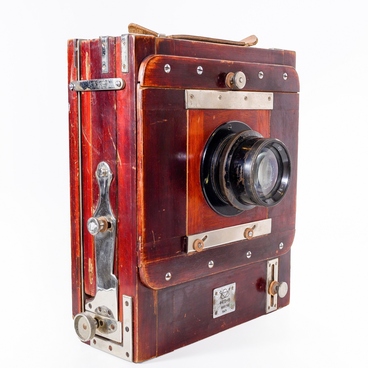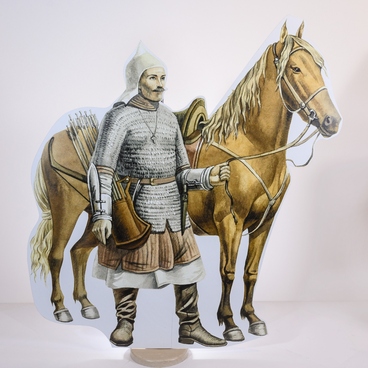The “Kiev-6 °C TTL” single-lens reflex camera was produced at the “Arsenal” plant in Kyiv from 1978 to 1986. This model replaced the earlier “Kiev-6S” and had a built-in TTL-exposure meter — a device that could measure the brightness level directly through the lens.
The “Kiev-6 °C TTL” camera was suitable for both professional and amateur shooting. The photographic material was a 61.5 mm wide roll film with no perforation at the edges. Such a film was produced in two formats: the 120 format for 12 frames, and the 220 format that was twice as long. The frame counter had two scales, one for each of the formats. It was possible to shoot until the letter “K” appeared instead of a number: it marked the end of the film. The frame size was 6×6 centimeters. A photographer performed the focusing with the help of a ground glass or a distance scale, located on the case.
The camera kit included the “Vega-12B” lens. However, the design allowed to replace it with other models — not only the ones that were produced for the “Kiev-6 °C” cameras but also removable versions for the “Pentacon Six” device.
The lens was attached to the camera with the help of a screw-threaded or a bayonet-type mount — the latter had a number of tabs that needed to be aligned with recesses along the edges of the opening. The name of the mount comes from the French word “bayonet” which means spike: this is why this type of connection was often called a “spike mount” in Soviet publications.
The camera was also equipped with lens rings for macro photography and nozzles — light filters of several types. The colorless UV-1x filter was used to reduce the impact of ultraviolet rays, and the yellow-green ZhZ-1.4x allowed better color transmission on highly sensitive photographic materials.
The camera body was made of a lightweight and durable aluminum alloy. On the front panel, there was a lever for the shutter cocking, mounts for the lens and flash lamps, fasteners for the neck strap, and a shutter button. The back panel of the camera could be removed to reveal the place for two spools: one with a film and an empty one, which the film was wound on after shooting each picture.
The “Kiev-6 °C TTL” camera was suitable for both professional and amateur shooting. The photographic material was a 61.5 mm wide roll film with no perforation at the edges. Such a film was produced in two formats: the 120 format for 12 frames, and the 220 format that was twice as long. The frame counter had two scales, one for each of the formats. It was possible to shoot until the letter “K” appeared instead of a number: it marked the end of the film. The frame size was 6×6 centimeters. A photographer performed the focusing with the help of a ground glass or a distance scale, located on the case.
The camera kit included the “Vega-12B” lens. However, the design allowed to replace it with other models — not only the ones that were produced for the “Kiev-6 °C” cameras but also removable versions for the “Pentacon Six” device.
The lens was attached to the camera with the help of a screw-threaded or a bayonet-type mount — the latter had a number of tabs that needed to be aligned with recesses along the edges of the opening. The name of the mount comes from the French word “bayonet” which means spike: this is why this type of connection was often called a “spike mount” in Soviet publications.
The camera was also equipped with lens rings for macro photography and nozzles — light filters of several types. The colorless UV-1x filter was used to reduce the impact of ultraviolet rays, and the yellow-green ZhZ-1.4x allowed better color transmission on highly sensitive photographic materials.
The camera body was made of a lightweight and durable aluminum alloy. On the front panel, there was a lever for the shutter cocking, mounts for the lens and flash lamps, fasteners for the neck strap, and a shutter button. The back panel of the camera could be removed to reveal the place for two spools: one with a film and an empty one, which the film was wound on after shooting each picture.



